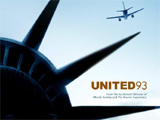United 93
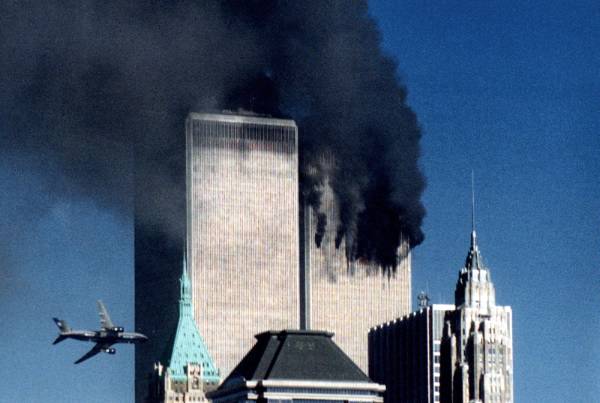 You remember where you were when you saw it happen. It was a normal Tuesday lunchtime in the UK, just after Neighbours in
fact. Flicking through the channels, every one of them seemed to be
showing a disaster movie, involving cinema’s most recognisable skyline.
Like most of the western world, you watched, incredulously, as fiction
and reality merged. No one knew then what was going to happen.
You remember where you were when you saw it happen. It was a normal Tuesday lunchtime in the UK, just after Neighbours in
fact. Flicking through the channels, every one of them seemed to be
showing a disaster movie, involving cinema’s most recognisable skyline.
Like most of the western world, you watched, incredulously, as fiction
and reality merged. No one knew then what was going to happen.

The Armageddon-esque cinematic clichés only appear in Surrey-born writer/director Paul Greengrass's reconstruction of 9/11 when (real) footage of the burning Twin Towers is displayed on a screen in the air traffic control centre. Meanwhile, in a bunker across the country, army types bark about this being a "real life situation," as opposed to another military drill.
Two basic emotions inform United 93; as Orson Welles said,
there is only boredom or terror in the air. Throughout the movie's
first act, following the mind-numbingly familiar process of going
through an airport terminal and getting yourself comfortable on a
plane, the audience's 20/20 hindsight hangs over the mundane action,
creating tension around scenes of everyday doings. Something as simple
as the aircraft safety demonstration - a period of time best used in
testing the reclining powers of your seat - takes on a terrible
poignancy, in the wake of the audience's knowledge of its futility in
this case.
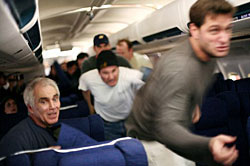
Ordinariness also characterises the would-be hijackers' entrance into the film. It begins with their morning rituals of washing, changing and praying at the start of what they have decided is their last day on earth. Later in the film, when the inevitable process begins on the plane, the familiar rhythms of the Lord's Prayer is muttered by more than a few passengers, and both echoed and contrasted by the unsubtitled incantations of the terrorists in the cockpit. The fact that their speech is only subtitled half the time is a very effective device - the audience literally cannot begin to understand what they are saying, and are left as bewildered and desperate to understand what's going on as the passengers are. The fact that the hijackers are also obviously scared and, in one case, thinking of dropping out of the plan, leads the audience into even greyer areas, questioning motive and background and history, all in a vain attempt to give meaning to the event.
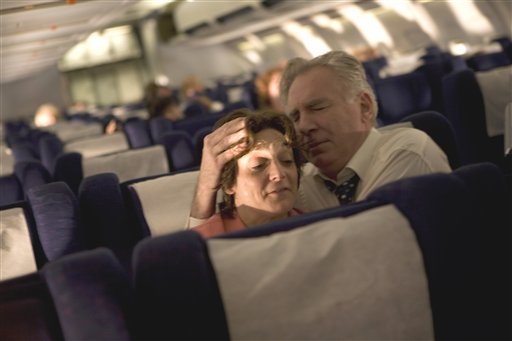 Rather
than making overt political statements, or delving into the pasts of
the terrorists in order to 'explain' why they did it, Greengrass uses
his trademark shaky, point-of-view camera to seat the audience in the
plane with the people that they are watching, so that they can feel, as
well as see, what it must have been like. In these terms, the reaction
of the passengers is clearly not about patriotism or national honour -
they were being led by their survival instincts, as we all would be in
that situation. In the scenes where the plane is shaken about by the
struggle to gain control, the audience realises just how fragile and
tiny the thing is, and yet how completely the passengers' lives depend
upon remaining in the air.
Rather
than making overt political statements, or delving into the pasts of
the terrorists in order to 'explain' why they did it, Greengrass uses
his trademark shaky, point-of-view camera to seat the audience in the
plane with the people that they are watching, so that they can feel, as
well as see, what it must have been like. In these terms, the reaction
of the passengers is clearly not about patriotism or national honour -
they were being led by their survival instincts, as we all would be in
that situation. In the scenes where the plane is shaken about by the
struggle to gain control, the audience realises just how fragile and
tiny the thing is, and yet how completely the passengers' lives depend
upon remaining in the air.
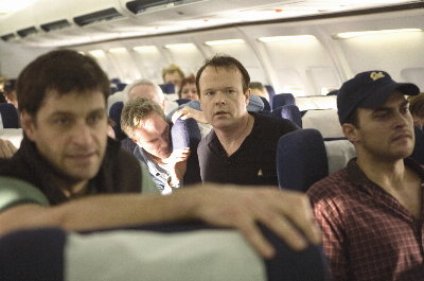
Part of the power of the claustrophobic, terrifying scenes on the doomed plane come
from Greengrass's refusal to demonise one side, or to make heroes out
of the others. Much has been made of Todd Beamer's phrase, "Let's
roll," uttered in conversation with an air phone operator,
which was subsequently turned into a political slogan -
President Bush has used it as a rallying war cry. In Greengrass's
reimagining, the phrase is inserted subtly into the actor's persuasive,
albeit desperate, explication of his nascent plan. In doing so,
Greengrass prevents the audience's preconceptions of what happened
aboard the flight from overcoming their empathy with these people who
are frantically fighting for their lives.
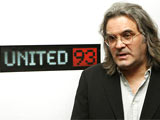 Greengrass
brought to the film his own formidable reputation for making affecting,
incisive documentaries about real events, such as The Murder Of Stephen Lawrence (1999) and Bloody Sunday (2002).
He worked closely with the families of the victims in order to gain as
full a picture as possible. Yet, he does feel that United 93
has become "a film version of the Rorschach test. You watch it and you
project into it what you see in 9/11 and beyond." British viewers may
find it impossible to not extend this "beyond" to include the 7/7
attacks of almost a year ago. The film does not pretend to find answers
that simply aren't there, but it does force the audience to imagine
themselves in that extreme situation, and to ask "How? Why? How do we
stop it happening again?"
Greengrass
brought to the film his own formidable reputation for making affecting,
incisive documentaries about real events, such as The Murder Of Stephen Lawrence (1999) and Bloody Sunday (2002).
He worked closely with the families of the victims in order to gain as
full a picture as possible. Yet, he does feel that United 93
has become "a film version of the Rorschach test. You watch it and you
project into it what you see in 9/11 and beyond." British viewers may
find it impossible to not extend this "beyond" to include the 7/7
attacks of almost a year ago. The film does not pretend to find answers
that simply aren't there, but it does force the audience to imagine
themselves in that extreme situation, and to ask "How? Why? How do we
stop it happening again?"
If there is any criticism to be made it is only minor: Greengrass's use of stock thriller soundtrack towards the end to ratchet up the tension is unnecessary and distracting. We all know what is going to happen, and the way it is portrayed onscreen is powerful and moving in itself. Adding the score simply distracts the audience, and highlights the aritificiality of film.
Still, it doesn't matter that much. Some people reckon that it's still too early, almost 5 years after the catastrophe, to transmute the reality of 9/11 into art. Greengrass's effort shows that it is never too soon to try. It needs to be seen.
To contact the author:
